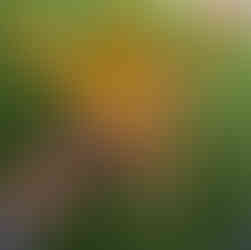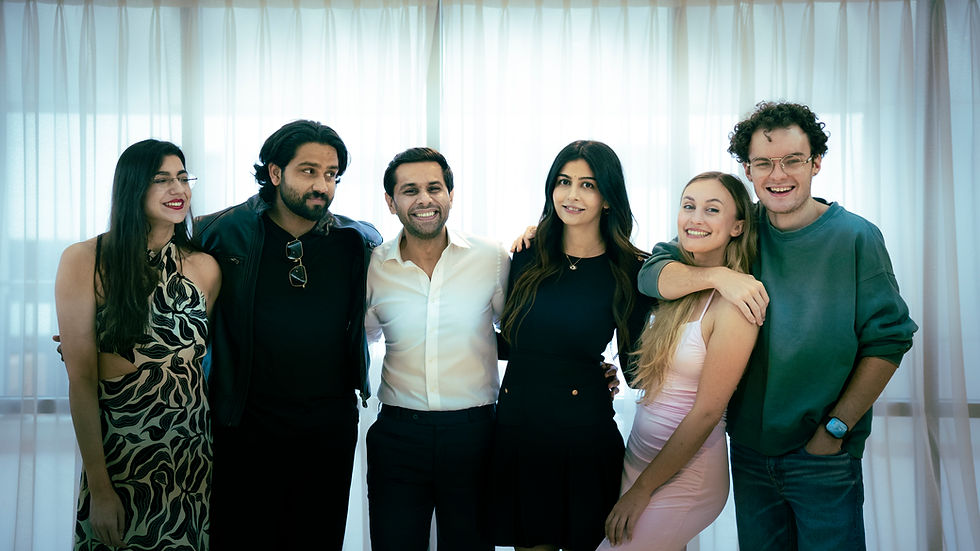A cultural love letter to Global Village, Dubai
- Purva Grover
- Feb 19
- 4 min read
Updated: Mar 24
What does love look like? Not the kind that exists in grand declarations but the one that quietly unfolds in shared meals, familiar melodies, and the intricate stitches of a handcrafted fabric. Standing at the heart of Global Village, Dubai, I see these proofs all around me—not in words, but in flavors, textures, and traditions carried across generations and continents.
French poet Pierre Reverdy once said, "There is no love, there are only proofs of love. Whatever love I might feel in my heart, others will see only in my actions." These words, read many moons ago, echo in my heart on a warm Saturday evening as I step into Global Village, Dubai. A celebration of diversity, creativity, and human connection, this cultural wonderland offers endless proofs of love—woven into its flavors, fashions, and artistic expressions. With nearly 10,000 steps tracked on my fitness app, every footfall brings a new testament to the universal language of love and heritage.
If love for the world's cultures could be documented in color, it would look like a Global Village. Layer by layer, let's uncover its vibrancy—pavilion hopping through centuries-old traditions, indulging in the flavors of unfamiliar cuisines, and collecting cultural nuggets that reflect our own in unexpected ways.

Saccharine sweet melodies
Having just sampled over a dozen honey varieties at the Yemen pavilion, I deliberate over my final choice—ginger, black seed, or wildflower. Each carries a distinct, buttery richness, making the decision deliciously difficult. The vendor, understanding the weight of sweet choices, patiently offers guidance. He assures me there's no point in checking another stall—"We all come from the same land, and our prices are competitive." Just as we exchange thoughts on the medicinal wonders of Yemeni honey, his attention shifts to a familiar melody playing from a guest's phone. The guest—an expat like myself—has selected an old Yemeni classic for her Instagram Reel, unknowingly transporting the pavilion's vendors back to the mountains of their homeland.
Quick fact: Yemeni Sidr Honey is among the finest in the world, prized for its purity and health benefits.
The dough of happiness
There's no such thing as too much sweet—a truth I reaffirm while standing in line at the Turkey pavilion, awaiting my share of freshly made Kunafa. The string-like strands of semolina dough crisp up in golden perfection before soaking in syrup, and the anticipation in the queue is palpable. Spotting many Indians in line, the vendor smiles and seamlessly switches to Hindi: "Aao, aao!" (Come, come!). This effortless exchange exemplifies the spirit of Global Village—where languages, tastes, and cultures intermingle with ease.
Quick fact: Künefe, a uniquely Turkish dessert, originated in Hatay and is traditionally made with the province's namesake cheese, similar to fresh mozzarella.
Colors of unity
No two pavilions are as vibrantly alive as those of India and Pakistan. Drenched in color, embroidery, and traditional textiles, it showcases a shared heritage that transcends borders. The laughter of shoppers echoes as they marvel at labels reading Made in India on garments in the Pakistan pavilion. This only-in-Dubai moment encapsulates the region's spirit of harmony. The sheer abundance of fabric, intricate weaves, and shimmering embellishments make time irrelevant here; to do justice to India's pavilion alone, set aside at least an hour.
Quick fact: Pakistan's rich textile traditions include Ajrak, Phulkari, Balochi embroidery, and handwoven fabrics like Khaddar and Jamawar.
Established in 1997, Global Village is a one-of-a-kind multicultural family destination, blending entertainment, shopping, dining, and cultural experiences. One of Dubai's top attractions, it welcomes millions of visitors each season, ranking as the fourth most-visited theme park globally. It's more than an event; it's a testament to the power of cultural exchange, uniting people worldwide through the universal language of human connection.
A pinch of saffron
The Iran pavilion is a sensory delight—saffron's golden strands glow under warm lights, intricate Persian carpets invite admiration, and calligraphy-inspired jewelry tells silent stories. There's a familiar comfort in the gentle fragrance of saffron, reminiscent of childhood glasses of warm milk or the delicate garnish on festive desserts. Every item—be it a painting, a jewel, or a silk shawl—is a thread in the rich tapestry of Persian culture.
Quick fact: Persian is considered a sweet language in Iran, with locals insisting that everything—from daily conversation to lyrical poetry—sounds more melodious in Farsi.

A fashion postcard
If Morocco were a postcard, it would be painted with sunrises, sunsets, and starlit skies. Its pavilion invites you to lose yourself in flowing djellabas, kaftans, and intricate accessories. The revival of traditional Moroccan fashion is evident here, as artisans breathe new life into centuries-old styles. This space isn't just about shopping; it's a love letter to craftsmanship, heritage, and self-expression through fabric.
Quick fact: A djellaba is a loose robe with a hood worn by Moroccan men and women alike. A kaftan, often hand-stitched and decorated, is its more ornate counterpart.
The wonders of Global Village extend far beyond these highlights. The Afghanistan pavilion tells stories through bold, breathtaking weaves, while Sri Lanka's debut pavilion brings batik artistry to life. The Bangladesh pavilion is a sensory delight, where aromatic curries mingle with handcrafted textiles. Meanwhile, stages come alive with cultural performances, and guests embark on a global culinary journey—from India's matka chai to Spain's crispy churros.
As my fitness app reminds me that 10,000 steps barely scratch the surface, I realize that Global Village isn't just a place—it's an experience that demands revisited, rediscovered, and relived.
P.S. The Global Village season runs until May 11, 2025. Witness the world in one place—from Japanese Kabuki masks to Iranian carpets, cashmere shawls to calligraphy jewelry, and the scent of frankincense and oud lingering in the air. Cultural love stories are told in flavors, fabrics, and footsteps here.

Authored by Purva Grover
Purva Grover is an author, journalist, and creative entrepreneur. She is the founder-editor of storiesoverart.com, a sanctuary for all who find solace, inspiration, and purpose in art. In a world that often overlooks the significance of art, she stands firm in her belief that it is essential, more so than anything else.






















Comments